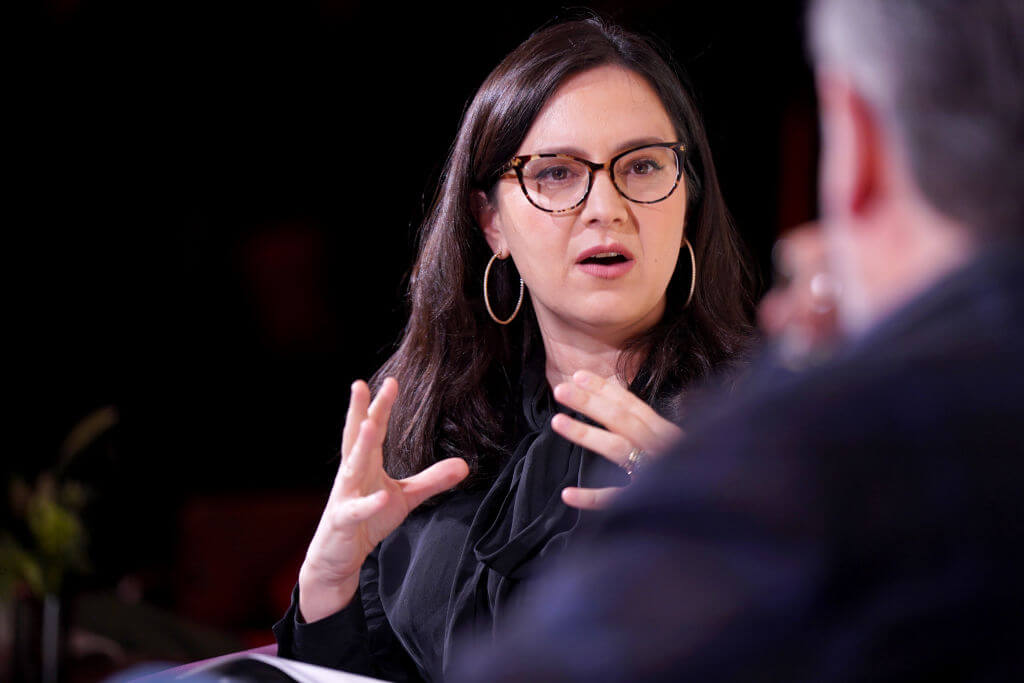Birthright Now Offers Free Trips to Israel — For Israeli Americans

Graphic by Angelie Zaslavsky
A decade ago, Eden Bennun wouldn’t even pass the initial screening for a Taglit-Birthright trip to Israel. She was born to Israeli parents and is fluent in Hebrew. More important, she had already visited Israel numerous times.
But now the 20-year-old psychology major from American Jewish University Los Angeles is preparing for her Birthright trip this winter, alongside 160 other young Americans who grew up in Israeli families that immigrated to the United States.
The inaugural Hebrew-language Birthright trip, which organizers hope is only the first of many such missions, demonstrates the shift in perception of American Jews of Israeli origin. No longer just another group in the process of assimilating into the broader Jewish community, they are seen now as having their own characteristics and needs, including the need to ensure their Israeli-American identity.
Why does Birthright — which began 15 years ago as a way to introduce Israel to American Jews, and depends on funds from philanthropists, Jewish federations and the Israeli government — now feel it must offer free trips to Israeli Americans?
“When we see members of our second generation detach themselves from Israel and disconnect from their Israeli identity, we seek ways to keep them in the community,” said Shanee Feig, chief programming officer for the Israeli American Council, an expanding organization of Israeli Americans that is behind IAC-Shelanu, the Hebrew-language Birthright trip.
A survey conducted by IAC last year found that Hebrew fluency rates fall dramatically among Israelis living in the United States for more than 10 years. This is why the new Birthright program will be conducted in Hebrew only and requires that all participants have Hebrew-language capabilities to be eligible for the trip.
In the initial screening questionnaire, applicants are asked to choose one of three definitions that best describes them: Israeli, Israeli American or Jewish American. IAC is looking for those who identify as Israeli Americans — that is, Israeli born but raised in America, or born in the United States to at least one Israeli parent. Organizers argue that even though these young adults identify as Israeli Americans, speak Hebrew and have visited Israel, there is something missing in their Israeli experience, since their connection to Israel is based on family roots rather than on communal identity.
Bennun agrees. “I spent countless summers on my cousin’s sofa in Israel,” she said. “We would go to the beach, eat shawarma and do everything, but we didn’t really meet Israelis and Israeli-Americans like me.” Bennun explained that she expects to come back from the trip with “a different kind of connection” with Israelis and Jewish Americans who want to advocate for Israel.
The Hebrew-language Birthright trip will take into account the participants’ knowledge of Israel’s daily life and will try to focus on networking with young Israelis rather than on the more conventional tourist activities that other trips offer.
Of the 150 applicants that have filled in forms for the Hebrew Birthright trip, 30 were already notified that they’ve been accepted and that screening of others is still going on.
The trip costs about $3,000 per person. A donation from Sheldon Adelson, the casino mogul and philanthropist, will directly cover half of the costs. The other half will come from IAC and from Birthright, two organizations that rely heavily on Adelson’s funding.
While opening Birthright to Israeli Americans seems to exceed the program’s original mandate, it fits in well with the organization’s trend of loosening its eligibility criteria and expanding its programs to include as many young Jewish participants as possible. Recently, Birthright began to reach out to “low affiliated” young Jews who previously weren’t seen as a target audience for the trips. In addition, it expanded programs tailored for specific needs and interests, including young lawyers, food enthusiasts, and provided trips for participants with special needs.
“The idea of homogenous groups works,” said Leonard Saxe, director of the Steinhardt Social Research Institute and the Cohen Center for Modern Jewish Studies at Brandeis University. Saxe, who has conducted extensive research of Birthright alumni, said the idea of Israeli-American Birthright groups is a “natural extension” of this trend.
The latest survey conducted by Saxe and his colleagues at Brandeis could further strengthen the community’s support for Birthright, a program already praised for being one of the few initiatives that has shown results in strengthening Jewish identity. The study examined the reaction to the recent Gaza war of Jewish Americans who either participated in Birthright trips or applied to participate. It found that they were far more supportive of Israel’s position in the war when compared with other Americans their age. Polls conducted during the war by the Pew Research Center and by Gallup found a significant drop in support for Israel among young and liberal Americans. Birthright applicants and participants, even those identifying as liberals, are immune to this trend, the Brandeis research found. This suggests the Birthright could be a powerful tool to address one of Israel’s biggest problems on the world scene: the loss of left-wing support.
But it may not be the only tool.
A recent survey commissioned by the Lappin Foundation, conducted by Steven M. Cohen and Ezra Kopelowitz examined Youth to Israel Adventure, a foundation program that on a much smaller scale sends high school students on study trips to Israel. Youth to Israel has already taken 2,000 high school students on two-week long trips to Israel. The missions, fully subsidized by the Lappin Foundation, cost $6,150 per teen. The results found that these trips are just as effective as Birthright in serving as key indicators of Jewish engagement, including in-marriage, religious observance and raising Jewish children.
“Insofar as policy makers are seeking to enhance Jewish engagement on the part of students and young adults, teen travel to Israel does seem to impart the long-range effects sought after by Jewish communal policy makers and the philanthropists who invest in such trips,” the study concludes.
Contact Nathan Guttman at [email protected] or follow on Twitter, @nathanguttman

















